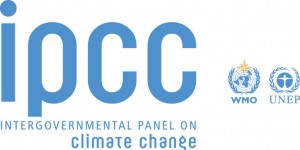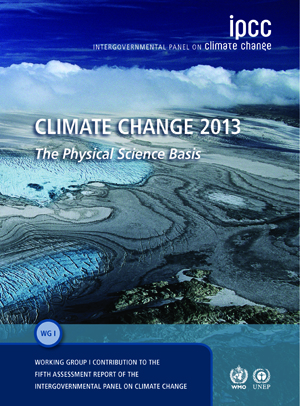 The IPCC will release its 5th Assessment Report (AR5) on 27 September here but in the meantime, here is some background put together by Neville Nicholls, Monash University
The IPCC will release its 5th Assessment Report (AR5) on 27 September here but in the meantime, here is some background put together by Neville Nicholls, Monash University
The latest climate change assessment from the Intergovernmental Panel on Climate Change, the IPCC, is due to arrive this weekend. This will be the fifth comprehensive assessment report (AR5) prepared by the IPCC since it was established in 1988.
But what is the IPCC, whose process is so labour intensive, time consuming and exhaustive that it takes six years?
The IPCC is an international body whose governing Panel is made up of government members representing 195 countries. But the Assessment Reports the IPCC produces are drawn up by a very large, global group of scientists and experts who contribute their time in drafting and revising and reviewing. These reports bring together the best of the recently published scientific and technical literature, and are intended to be “policy relevant but not policy prescriptive”.
The IPCC is organised into three Working Groups and a Task Force. Working Group I deals with “The Physical Science Basis of Climate Change”, Working Group II deals with “Climate Change Impacts, Adaptation and Vulnerability”, and Working Group III deals with “Mitigation of Climate Change”. The Task Force refines the methodology for the calculation and reporting of national greenhouse gas emissions and reductions. All these groups have two co-chairs, one from a developed country and one from a developing country.

Draft, review, draft, review
Governments and other bodies nominate potential IPCC authors who are experts in their field, and are selected also to try and produce a geographical and gender balance. Groups of around 10-20 experts prepare individual chapters covering their area of expertise. The first step in bringing these chapters together to form an assessment report starts when authors and co-chairs meet to develop a Zero Order Draft, which will take about three months, perhaps involving additions from invited Contributing Authors. The draft is then distributed to a small number of reviewers, who for each chapter provide feedback on how well the structure and proposed content works.
The next step is to prepare a First Order Draft, which is distributed for expert review. At this stage anyone can self-nominate as an “expert”, if they can justify their credentials and expertise, and on condition that they agree to adhere to the rule of confidentiality, so there are no leaks of early drafts.
Several months are allowed for expert comments, which are individually identified and linked to the expert offering them. The First Order Draft of Working Group I for forthcoming AR5 report for example received 21,400 comments from 659 experts. The authors respond to each of the comments, and these responses are also tagged and recorded.
A Second Order Draft is prepared based on review comments, including a Summary for Policymakers (SPM) that summarises the most important conclusions. This draft is returned to the experts for another review, and also to government panel members for their comments. The AR5’s Second Order Draft for Working Group I received 31,422 comments from about 800 experts and 26 governments.
Tying things together
At this stage we approach the cut-off date for scientific literature that can be cited in the report, usually about six months before the final Plenary meeting where the document is approved.
Authors meet again to consider the comments on the Second Order Draft, and to start preparing the Final Draft. This, once ready, is passed to government members for a final review. The final author meeting is held immediately prior to a Working Group Plenary and responds to government comments on the final draft. The revised draft is then taken into the Working Group Plenary for discussion and, ultimately, approval.
The Summary for Policymakers is discussed and approved line-by-line and, if necessary, word-by-word. Lead Authors explain and defend their chapter’s contributions. If there is a dispute, a smaller group may be established to refine the language. The role of the Plenary is to ensure what ends up in the document governments will read is appropriate and clear, but still accurately reflects the science.
The Working Group Plenary will then accept the report made up of the chapters prepared and reviewed by authors and approve the final Summary for Policymakers. This usually happens in the early hours of the morning after the final of four days of tough negotiations between all parties, and generally only a few hours before a scheduled launch press conference.
Is it all worth it?
For more than 20 years the IPCC process has managed to assimilate the rapidly expanding scientific literature about climate change, and summarise it for those that need to know. The interest shown in the IPCC reports illustrates how important these Assessments have been in trying to keep track of and understand what the science tells us. And the unique if longwinded IPCC process – open, transparent, and involving as many relevant parties as possible – is why its work is respected.
The scientists work very hard to explain their levels of confidence in their conclusions, using very defined language to express this confidence. Some may disagree with parts of the IPCC assessment, but at least they will see, laid out for them in clear and formal language exactly how the scientists writing the assessments arrived at their conclusions. I can’t see how a fairer, more comprehensive, or more credible alternative could be designed.
A version of this article was published at the Australian Meteorological and Oceanographic Society
Professor Neville Nicholls is the immediate past President of the Australian Meteorological and Oceanographic Society. He was trained as a weather forecaster by the Bureau of Meteorology in 1971, and worked for the Bureau undertaking climate research until 2005. He joined Monash University in 2006 where he teaches the geopolitics of climate change. He was a Coordinating Lead Author for the IPCC Second Assessment (1996) and the recent Special Report on Extremes (“SREX”, 2012), and a Lead Author for the Fourth Assessment in 2007 and for the 1992 Supplement to the First Assessment.
![]()
This article was originally published at The Conversation.
Read the original article.

